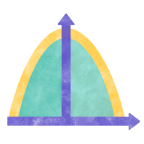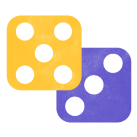Probabilidad
Aprende y practica cómo hallar la probabilidad de un evento aleatorio con los recursos interactivos de GeoGebra.
Educación Media
GRADOS 6-8
Estrategias de conteo para espacios muestrales.
Determinar la cantidad de elementos del espacio muestral para un evento utilizando estrategias de conteo (incluyendo diagramas de árbol, permutaciones, combinaciones y el principio fundamental del conteo).
Temas relacionados
Recursos de la comunidad
Explora una extensa colección de más de un millón de actividades, ejercicios y lecciones de matemáticas y ciencias elaboradas meticulosamente por nuestra comunidad global de GeoGebra. Sumérgete en las infinitas posibilidades que están esperándote.

Comienza a utilizar GeoGebra hoy
Crea una cuenta gratuita para poder guardar tu progreso en cualquier momento y acceder a miles de recursos matemáticos que puedes personalizar y compartir con otros






